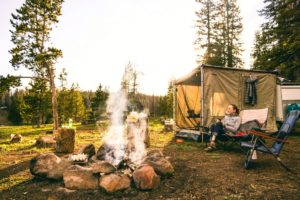How to be a Safe Campfire Starter
Are you all set for your weekend camping trip?
Aside from packing your gear and supplies, don’t forget your fire starter essentials to make sure you keep warm at night, especially for cooking meals, making s’mores and if you have other activities planned like catching up, story telling, playing games or singing along a jam session with friends and family over a campfire.
After you have settled in at your camp site, the next thing to do is build a campfire. Make sure to pick out a spot that is safe, away from trees or flammable objects and structures. If there’s already an existing ring or pit at the camp site, build your fire there instead of creating a new one. Usually the fire pit is located in a flat area and surrounded by rocks to contain the fire.
You will need your fire starters – lighter or waterproof matches, tinder such as dried leaves and twigs, home made such as dryer lint or even WetFire™- and of course firewood. Gather as much tinder as possible if you plan on having your fire burning for the rest of the night. Your main fuel are your logs and tree branches.
There are different ways to stack your kindling. The common ways to assemble your campfire are the tepee and lean-to style. For the tepee style, your tinder is placed in the center of the fire pit and you build a tepee around it using twigs or smaller wood. If you prefer the lean-to style, use a big log where your kindling and tinder will lean against it. You insert a long kindling stick into the ground at an angle and smaller pieces of of kindling will lean on it. As you build your fire, keep adding layers of tinder and smaller kindling then working through your branches and larger wood slowly and steadily.
Putting out fire is as important as building one. When your campfire activities have ended, it’s time to carefully extinguish the fire before heading back to your tent to sleep. Allow the wood to burn down and pour water on the fire ring drown the embers and stir them using a stick or shovel. Make sure that all them embers are gone and that the remaining wood or twigs are wet and cold.
Lastly, try to leave as little trace or impact. If there was no existing fire pit and you had to create a new one, patch the disturbed ground and make sure you don’t leave trash at the camp grounds.


